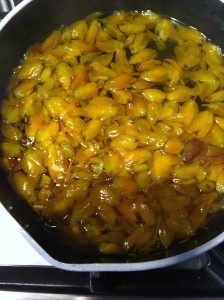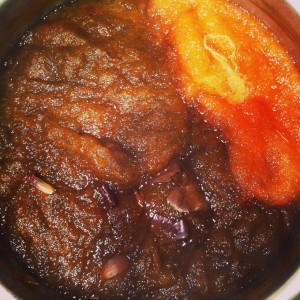Natural dyeing is something I’ve wanted to try since one of my fellow guild members —Jackie Crook–gave a talk and demonstration last year. I’ve been saving onion skins, trying to grow woad, looking out for natural dye stuff as I’m driving through the Essex countryside. A few weeks ago after the first gorse blossoms appeared I got out my dye pots and started thinking about a dye garden.
I’ve borrowed Jill Goodwin’s A Dyer’s Manual from the guild library. I followed her instructions for mordanting–I used Alum–and dye stuff to fiber ratios. I soaked madder, made a gorse blossom liquor an
d boiled up some onion skins.
I used some White-faced Woodland and fawn-colored Shetland fleece as well as some BowmontXDorset (BoDo) and angora yarn to test.
The BoDo/Angora could have used a little more dyestuff to bring out a deeper red color. Next time I’ll be more careful about my dyestuff:fiber ratio.
I was most excited by the onion skin result on the fawn-colored fleece. I gave a brilliantly rich green/gold/brown tone. The onion skins dyed the white fleece a lovely brown/gold.
The effect of the gorse blossom was much more subtle. The white fleece took on a soft lemon tone and the lighter parts of the fawn fleece did too.
One reason–apart from lack of time–I hadn’t gotten into natural dyeing was I thought mordanting the wool would be a pain–it wasn’t. I also wondered whether natural dyeing could possibly yield better results than acid dyes.
Well. Natural dyes yield much subtler tones. You’re not going to get fancy multicolored roving using this method. And that’s OK.
What about the dye garden? Well madder, woad, weld and polygonum tinctorium (indigo) seeds have been found. It’s still too cold to plant anything here, but the ground is being prepared.





I really love the color you got from the madder.